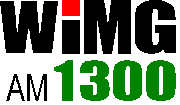Related Research Articles

The Federal Radio Commission (FRC) was a government agency that regulated United States radio communication from its creation in 1927 until 1934, when it was succeeded by the Federal Communications Commission (FCC). The FRC was established by the Radio Act of 1927, which replaced the Radio Act of 1912 after the earlier law was found to lack sufficient oversight provisions, especially for regulating broadcasting stations. In addition to increased regulatory powers, the FRC introduced the standard that, in order to receive a license, a radio station had to be shown to be "in the public interest, convenience, or necessity".
WTVN – branded as "News Radio 610 WTVN" – is a commercial talk radio station licensed to Columbus, Ohio. Owned by iHeartMedia, the station serves the Columbus metro area. The WTVN studios area located in Downtown Columbus, and its transmitter site is near Obetz. In addition to a standard analog transmission, the station simulcasts over the HD digital subchannel of co-owned 93.3 WODC, and streams online via iHeartRadio. WTVN began broadcasting in HD Radio in June 2005, but the in-band on-channel subcarrier was discontinued by 2015.

The Radio Act of 1927 was signed into law on February 23, 1927. It replaced the Radio Act of 1912, increasing the federal government's regulatory powers over radio communication, with oversight vested in a newly created body, the Federal Radio Commission. It also was the first legislation to mandate that stations had to show they were "in the public interest, convenience, or necessity" in order to receive a license. The Act was later replaced by the Communications Act of 1934.
WWL is a U.S. AM radio station in New Orleans, Louisiana, owned by Audacy, Inc. The station has a talk radio format with sports talk at night. Studios are at the 400 Poydras Tower in the New Orleans Central Business District.

KQNT is a commercial radio station licensed to Spokane, Washington. It is one of the oldest radio stations in Washington, going on the air in 1922 in Seattle. KQNT offers a talk radio format and is owned by iHeartMedia, Inc. The studios and offices are on East Sprague Street in Spokane.

KGNC is an AM radio broadcast station in Amarillo, Texas, United States with a news/talk format. The station is owned by Alpha Media LLC. Studios for KGNC and its partners are located in southwest Amarillo near the former Western Plaza shopping center. KGNC's programming is also broadcast on 97.5 FM by translator K248DE in Amarillo.
WHJJ is a commercial radio station in Providence, Rhode Island. It carries a talk radio format and is owned by iHeartMedia, Inc. The studios and offices are on Oxford Street in Providence.
The Federal Radio Commission's (FRC) General Order 40, dated August 30, 1928, described the standards for a sweeping reorganization of radio broadcasting in the United States. This order grouped the AM radio band transmitting frequencies into three main categories, which became known as Clear Channel, Regional, and Local. It also included provisions for coordination with Canadian station assignments. The majority of the reassignments resulting from the plan's implementation went into effect on November 11, 1928.
WHAZ is a commercial AM radio station licensed to Troy, New York, and serving New York's Capital District. The station is locally owned by the Capital Media Corporation and broadcasts a Christian talk and teaching radio format. National religious leaders heard on WHAZ include Jim Daly, Charles Stanley, Joyce Meyer, Chuck Swindoll and David Jeremiah.
KNIT is an AM radio station in Salt Lake City, Utah. It serves the Wasatch Front area of Utah. The station is one of the oldest in Salt Lake City, established in 1922 as KDYL. KNIT's transmitter site is on Pitchfork Lane in Murray, Utah, near Interstate 215. It broadcasts at 730 watts, using a single tower non-directional antenna. The station shares this tower with KJJC.
WKAR is an educational radio station, licensed to the trustees of Michigan State University (MSU) at East Lansing, Michigan, United States. The station is part of MSU's Broadcasting Services Division, along with WKAR-FM and WKAR-TV. Studios and offices are located in the Communication Arts and Sciences Building, at the southeast corner of Wilson and Red Cedar Roads on the MSU campus.
KMJ is a commercial AM radio station in Fresno, California. It airs a Republican news/talk radio format, and simulcasts with sister station KMJ-FM. Owned by Cumulus Media, the studios and offices are located at the Radio City building on Shaw Avenue in North Fresno.
WCAO is a commercial radio station in Baltimore, Maryland. It broadcasts an urban gospel radio format and is owned by iHeartMedia, Inc. It also airs some Christian talk and teaching programs. The studios and offices are located at The Rotunda shopping center in Baltimore.

WIMG is a radio station broadcasting a Gospel music format. Licensed to Ewing, New Jersey, the station is currently owned by Morris Broadcasting Company of New Jersey, Inc.
KRKO is a commercial radio station licensed to Everett, Washington. The station broadcasts an oldies-classic hits-sports radio format to the Seattle metropolitan area. The station was established in 1922, and is currently operated by S-R Broadcasting Co., Inc., a locally owned company.
KWSU is a non-commercial radio station licensed to Pullman, Washington. The station is owned by Washington State University, and is the flagship of Northwest Public Broadcasting's National Public Radio News network. It airs a schedule of news and talk programming from NPR, American Public Media and Public Radio International, as well as locally produced offerings.

WLAP is a commercial AM radio station in Lexington, Kentucky, serving the Central Kentucky region. It airs a talk radio format and is owned by iHeartMedia, Inc. The studios and offices are on Nicolasville Road in Lexington.
The Davis Amendment was a provision attached to the March 28, 1928 reauthorization of the Radio Act of 1927, which mandated an "equality of radio broadcasting service" within the United States. It specified an "equitable allocation" among five regional zones, in addition to assignments proportional to population among the states within each zone. Its implementation resulted in the development of a complicated quota system by the Federal Radio Commission, and although its provisions were carried over to the Federal Communications Commission by the Communications Act of 1934, it ultimately proved impractical, and was repealed on June 5, 1936.
Portable broadcasting stations in the United States was a category of AM band radio stations, which were not restricted to operation in a specific community, but instead were permitted to be transported for broadcasting from various locations. These authorizations began in the early 1920s during a period when radio regulation in the United States was the responsibility of the Department of Commerce. However, after the newly formed Federal Radio Commission (FRC) took over in early 1927, it was decided that allowing stations to make unrestricted relocations was impractical, and in 1928 the FRC announced that existing portables that had not settled into permanent locations would be deleted. Station owner C. L. Carrell attempted to overturn the new policy, but was unsuccessful.
The Federal Radio Commission's (FRC) General Order 32, dated May 25, 1928, notified 164 of the over 600 existing U.S. radio stations that their applications for continued operation would be denied unless they showed that they met the FRC's "public interest, convenience, or necessity" standard. The result was the elimination of more than 60 stations, plus numerous power reductions, that somewhat reduced the congestion of the broadcast band, in preparation for implementation of the General Order 40 reallocation later that year.
References
- ↑ "Amendments to Regulations", Radio Service Bulletin, January 3, 1922, page 10.
- ↑ "Amendments to Regulations", Radio Service Bulletin, September 1, 1922, pages 10-11.
- ↑ "General Orders of the Federal Radio Commission", Radio Service Bulletin, August 31, 1928, pages 9-10.